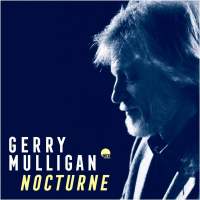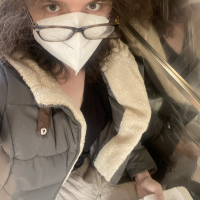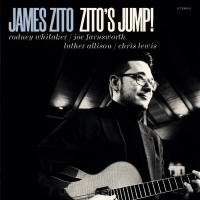Home » Jazz Musicians » Gerry Mulligan
Gerry Mulligan
Gerry Mulligan grew up in Philadelphia and first learned piano, which he played occasionally. While in his teens, he wrote arrangements for Johnny Warrington's radio band (1944) and played reed instruments professionally. After moving to New York in 1946, he joined Gene Krupa's big band as staff arranger, attracting attention with his Disc Jockey Jump (1947). He then became involved with the nascent cool-jazz movement in New York, taking part in the performances (1948) and recording sessions (1949-50) of Miles Davis' nonet and contributing scores to the big bands of Elliot Lawrence and Claude Thornhill. By this time, he was specializing in baritone saxophone and playing in groups with Kai Winding and others. He also wrote scores for Stan Kenton's band and recorded with his own tentet (1951), which was modeled on Davis's ensemble.
In 1952, Mulligan, then based in Los Angeles, formed his first "piano-less" quartet, with Chet Baker on trumpet. The group was instantaneously successful and brought Baker and Mulligan international acclaim. Mulligan led a new tentet and various versions of the quartet throughout the mid-1950s. He made a sensational appearance at the Salle Pleyel in Paris in 1954 and began dominating jazz opinion polls for his instrument. In 1960, he organized his own 13-piece concert jazz band with which he toured Europe in that year and Japan in 1964. After it disbanded, he became an active sideman, working often with Dave Brubeck (1968-72) and as a freelance arranger for other jazz groups. He formed a new 14-piece big band, the Age of Steam, in 1972, and was artist-in-residence at Miami University in 1974.
From 1974 to 1977, Mulligan led a sextet that included Dave Samuels, and during this period he worked regularly in New York and Italy. Around the same time he began playing soprano saxophone. He formed a 14-piece band in 1978 and toured with it into the following year. During the early 1980s, he made recordings as a leader in New York that involved experiments with a 20-piece big band (1980) and electronic instruments (1982-3), but in 1986 he returned to a more familiar format as the leader of a quintet with Scott Hamilton and Grady Tate.
Mulligan is among the most versatile figures in modern jazz. Although slow to develop as an instrumentalist, he has long been recognized as the most important baritone saxophonist in jazz since Harry Carney. Besides the cool idiom that he helped to create, he is equally at home in a big-band, bop, or even Dixieland context (playing clarinet in the latter), and his excellent recordings with musicians as varied as Johnny Hodges and Thelonious Monk show an unusual musical adaptability.
Read moreTags
Gerry Mulligan: Nocturne

by Alberto Bazzurro
Già edito nel 2005 con un brano in meno (il conclusivo “Rico Apollo"), questo doppio live colto in quel di Bologna nell'aprile 1992 ci tramanda un Gerry Mulligan in ragguardevole forma, lui come del resto il trio che lo affianca, capeggiato (se possiamo dire così) da un pianista dell'affidabilità di Harold Danko. Tredici i brani complessivi, per oltre un'ora e mezza di musica piuttosto tirata (oltre che ottimamente incisa e oggi rimasterizzata), tutti a firma del baritonista ...
Continue ReadingGerry Mulligan: Nocturne

by Jack Kenny
This album might go a small way to setting a record straight. Gerry Mulligan has often been underrated. Despite the critical acclaim and historical significance later attributed to Miles Davis for his groundbreaking work on the Birth of the Cool sessions, a closer examination of the repertoire reveals the profound influence of Mulligan's writing. It was Gerry Mulligan who arguably contributed many of the compositions and arrangements that defined the project's innovative sound. His compositional voice, characterized by a lighter, ...
Continue ReadingWay Down Low

by Patrick Burnette
To start off what is certain to be an interesting new year, Mike and Pat look at leader dates by the deepest of the regularly-used saxophones, the baritone. All four leaders are specialists on the unwieldly horn, though some do dabble in doubling from day to day. Two are composers and one has a crush on that greatest and most irascible of bassists, Charles Mingus.Playlist Pat reads listener emails. 1:00 Discussion of Serge Chaloff' album Blue Serge (Capitol) ...
Continue ReadingThe Gerry Mulligan 1950s Quartets

by Ian Patterson
The Gerry Mulligan 1950s Quartets Alyn Shipton240 Pages ISBN: 978-0197579763 Oxford University Press 2023 Several are the biographies of Gerry Mulligan, arguably jazz's most celebrated baritone saxophonist. None, however, have focused as specifically and as closely as this tome does on the quartets with which Mulligan made his name in the 1950s. Such focused, detailed analysis is the bread and butter of author Alyn Shipton and Oxford University Press. Shipton, BBC ...
Continue ReadingAre Ten Enough?

by Patrick Burnette
The boys have been at this podcasting game for ten years now (plus a few “bonus" episodes) and celebrate with a tenth anniversary show dedicated to--what else?--tentets. And yes, spell-check, “tentet" is a real word. We journey from the 1950's to the right-now's in quest of ensembles too big to be a combo, too small to be a “big" band, and generally like what we find.Playlist Discussion of Gerry Mulligan' album Gene Norman Presents the Original Gerry Mulligan ...
Continue ReadingGerry Mulligan, Adam Price & More

by Joe Dimino
This week we begin with a profile of a the fresh jazz sounds out of the United Kingdom with The Beats and Pieces Big Band featuring the group's leader Ben Cottrell off their latest commemorative CD simply entitled Ten. It celebrates a full decade of their groundbreaking jazz groove. The hour continues with a mincing of both the old and the new, including legends like Billy May and Gerry Mulligan. The show continues with a highlight of ...
Continue ReadingGerry Mulligan with Stockholm Philharmonic Orchestra

by Angelo Leonardi
Gerry Mulligan Gerry Mulligan with Stockholm Philharmonic Orchestra M.A.P. Editions 2015 Valutazione: * * * ½ Com'è noto Gerry Mulligan non è stato solo uno dei massimi esponenti del sax baritono nel jazz ma anche un magistrale compositore e orchestratore. Basterebbe solo ricordare che all'età di 22 anni, partecipando all'incisione di Birth of the Cool, scrisse e arrangiò capolavori come “Jeru," “Venus de Milo," “Rocker" e orchestrò “Godchild," “Deception" e “Darn That Dream." Un ...
Continue ReadingPerfection: Gerry Mulligan - Night Lights (1963)

Source:
JazzWax by Marc Myers
If all Gerry Mulligan had composed and recorded was the song Night Lights, he'd be extraordinary. The impossibly beautiful and hypnotic ballad appeared on his 1963 album of the same name. To make the track even more compelling, Mulligan plays piano, not baritone saxophone, and he was accompanied by Art Farmer (flhrn), Bob Brookmeyer (v-tb), Jim Hall (g), Bill Crow (b) and Dave Bailey (d). Here's Gerry Mulligan's Nigh Lights; do yourself a favor and set the clip to loop, ...
read more
Gerry Mulligan: 'Spring in Stockholm,' 1959

Source:
JazzWax by Marc Myers
In early 1958, baritone saxophonist Gerry Mulligan formed a new pianoless quartet, featuring Art Farmer on trumpet, Henry Grimes on bass and Dave Bailey on drums. By July, Bill Crow had replaced Grimes on bass. The post-war, no-piano format was first pioneered by Mulligan in 1952, with Chet Baker on trumpet, Bob Whitlock on bass and Chico Hamilton on drums. The absence of a piano to fill space compelled the quartet to be more contrapuntal in its execution. But the ...
read more
Backgrounder: Gerry Mulligan - Jeru

Source:
JazzWax by Marc Myers
"Jeru" is a nickname Miles Davis came up with for baritone saxophonist Gerry Mulligan in the late 1940s when they were rehearsing the Miles Davis Nonet. The recordings they made between 1949 and 1950 would eventually wind up on a Capitol compilation album entitled Birth of the Cool. Jeru is also the title of an album that Mulligan recorded for Columbia in June 1962. Here's the personnel: Gerry Mulligan (bar), Tommy Flanagan (p), Ben Tucker (b), Dave Bailey (d) and ...
read more
Jazz Musician of the Day: Gerry Mulligan

Source:
Michael Ricci
All About Jazz is celebrating Gerry Mulligan's birthday today!
Gerry Mulligan grew up in Philadelphia and first learned piano, which he played occasionally. While in his teens, he wrote arrangements for Johnny Warrington's radio band (1944) and played reed instruments professionally. After moving to New York in 1946, he joined Gene Krupa's big band as staff arranger, attracting attention with his Disc Jockey Jump (1947). He then became involved with the nascent cool-jazz movement in New York, taking part in ...
read more
Jazz Musician of the Day: Gerry Mulligan

Source:
Michael Ricci
All About Jazz is celebrating Gerry Mulligan's birthday today!
Gerry Mulligan grew up in Philadelphia and first learned piano, which he played occasionally. While in his teens, he wrote arrangements for Johnny Warrington's radio band (1944) and played reed instruments professionally. After moving to New York in 1946, he joined Gene Krupa's big band as staff arranger, attracting attention with his Disc Jockey Jump (1947). He then became involved with the nascent cool-jazz movement in New York, taking part in ...
read more
Jazz Musician of the Day: Gerry Mulligan

Source:
Michael Ricci
All About Jazz is celebrating Gerry Mulligan's birthday today!
Gerry Mulligan grew up in Philadelphia and first learned piano, which he played occasionally. While in his teens, he wrote arrangements for Johnny Warrington's radio band (1944) and played reed instruments professionally. After moving to New York in 1946, he joined Gene Krupa's big band as staff arranger, attracting attention with his Disc Jockey Jump (1947). He then became involved with the nascent cool-jazz movement in New York, taking part in ...
read more
Five Videos: Gerry Mulligan

Source:
JazzWax by Marc Myers
Baritone saxophonist Gerry Mulligan was a potent artist whose reach extended into many different areas of jazz across six decades. As a dominant arranger and player in the 1940s, he influenced big bands led by Gene Krupa, Elliot Lawrence and Claude Thornhill, fusing bop and swing. In 1949 and '50, he was a member of Miles Davis's so-called Birth of the Cool band as a player, arranger and composer. In the early 1950s, he formed a contrapuntal pianoless quartet on ...
read more
Jazz Musician of the Day: Gerry Mulligan

Source:
Michael Ricci
All About Jazz is celebrating Gerry Mulligan's birthday today!
Gerry Mulligan grew up in Philadelphia and first learned piano, which he played occasionally. While in his teens, he wrote arrangements for Johnny Warrington's radio band (1944) and played reed instruments professionally. After moving to New York in 1946, he joined Gene Krupa's big band as staff arranger, attracting attention with his Disc Jockey Jump (1947). He then became involved with the nascent cool-jazz movement in New York, taking part in ...
read more
10 Tributes to Gerry Mulligan

Source:
JazzWax by Marc Myers
Gerry Mulligan's contributions to jazz are monumental. As an arranger, the baritone saxophonist pulled drummer and bandleader Gene Krupa into the bebop era in the mid-1940s, gave bandleader Claude Thornhill a hip sound in the late 1940s, made major contributions to the Miles Davis “Birth of the Cool" recording sessions at the tail end of the '40s, created a revolutionary pianoless quartet with Chet Baker in Los Angeles in 1952, influenced arrangers Bill Holman and Shorty Rogers on the West ...
read more
Jazz Musician of the Day: Gerry Mulligan

Source:
Michael Ricci
All About Jazz is celebrating Gerry Mulligan's birthday today!
Gerry Mulligan grew up in Philadelphia and first learned piano, which he played occasionally. While in his teens, he wrote arrangements for Johnny Warrington\'s radio band (1944) and played reed instruments professionally. After moving to New York in 1946, he joined Gene Krupa\'s big band as staff arranger, attracting attention with his Disc Jockey Jump (1947). He then became involved with the nascent cool-jazz movement in New York... Read more.
Place ...
read more
































































